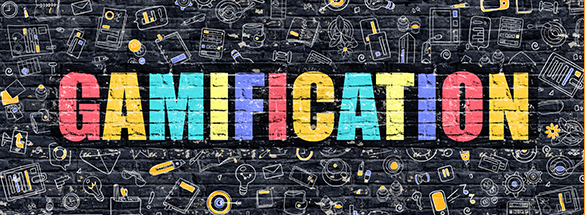Gamification is a term that brings about a lot of confusion in the world of education. Despite its acknowledgement as an efficient learning method inside the classroom, some educators are still associating game-related concepts with being a distraction. If a student is engaged in what feels like a game, how are they expected to learn? But gamification is not so much turning your curriculum into a game, but rather providing incentives to students that emulate the reward system associated with a gaming experience. The word “gamification” is a fairly recent term that encompasses previous methods of incentivizing students in addition to the new developments hitting the market.
According to a study from TechSci Research, the gamification market size in 2018 had a global value worth $6.8 billion and predicted to register a growth of 32%, reaching $40 billion by 2024. Gamification is defined as the application of elements typically found in a game to another type of activity. Examples may include the implementation of point scoring, competition, rules, and much more. This concept is applied to companies, corporations, schools, and universities around the world. When placed in an educational context, it can be applied to students and their peers. It has already proven an effective way to increase student engagement, productivity, participation, and the retaining of new material. But gamification goes beyond the gold stars awarded to us growing up in school. Digital trophies and virtual prizes have centralized gamification as a crucial component in a contemporary curriculum.
School administrations are continuously striving to reach maximum student achievement, but the classroom is becoming less pen and paper and more finger and screen. Children and young adults are instantaneously absorbing information at a quicker rate than ever before. Everyone has a computer in their pocket with a search engine just a few taps away. Students are far less enthused to grab a pencil and fill out a printed worksheet than engage in something with a little interactive incentive. That doesn’t mean video games need to be a part of the daily learning routine, but it does mean that certain qualities associated with the games of today’s generation can be seamlessly implemented into a school setting to boost student potential. The computer programs and software already being used by instructors to engage students with their peers can include a competitive edge. Google has a variety of functions such as Sites, Forms, Slides, and Drawings that tap into the visually interactive attractions that grab student attention. Add some digital points and prizes, and the students feel less like they’re doing busy work and more like they are completing a challenge.
This principle can apply to different types of classroom activity. Give points to the students who finish their homework and have it ready on their desk without additional prompting from their instructor. When the points add up, a prize can be rewarded. For elementary children, award them the option of choosing a fun activity as a reward for productive learning or completing necessary tasks. This gives them something to work towards without them feeling like their actions are going unnoticed. Tracking student accomplishment in a visual way or passing out certificates to the students with the most points for the month can leave an impact. And best of all, it allows students and teachers to connect through the material.
Gamification inspires students to rise to new challenges and apply what they learn firsthand. Students want to know that their achievements are being recognized as they retain new material. Gamification also provides teachers with comfort in knowing that their students are engaged with their peers and learning the material while connecting with the instructor. Nobody wants to feel like they are talking to a brick wall. Motivating students with healthy incentive is a proven method for academic success. As we transition to a modern classroom in the digital age, gamification will remain a constructive method that shapes the learning process.

